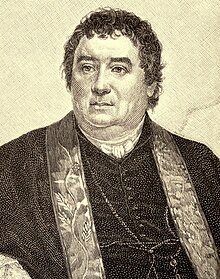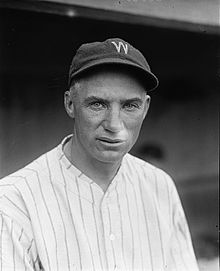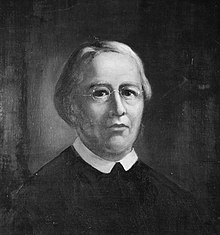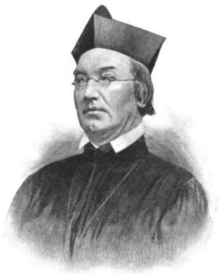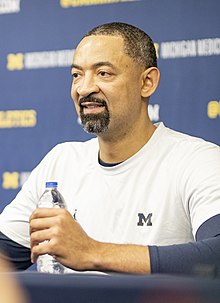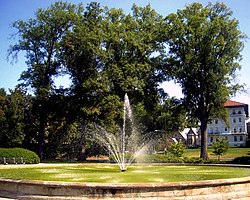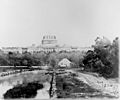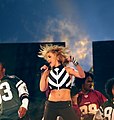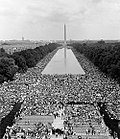Portal:Washington, D.C.
The Washington, D.C. portal

Washington, D.C., formally the District of Columbia and commonly known as Washington or D.C., is the capital city and federal district of the United States. The city is on the Potomac River, across from Virginia, and shares land borders with Maryland to its north and east. It was named after George Washington, the first president of the United States. The district is named for Columbia, the female personification of the nation.
The U.S. Constitution in 1789 called for the creation of a federal district under exclusive jurisdiction of the U.S. Congress. As such, Washington, D.C., is not part of any state, and is not one itself. The Residence Act, adopted on July 16, 1790, approved the creation of the capital district along the Potomac River. The city was founded in 1791, and the 6th Congress held the first session in the unfinished Capitol Building in 1800 after the capital moved from Philadelphia. In 1801, the District of Columbia, formerly part of Maryland and Virginia and including the existing settlements of Georgetown and Alexandria, was officially recognized as the federal district; initially, the city was a separate settlement within the larger district. In 1846, Congress reduced the size of the district when it returned the land originally ceded by Virginia, including the city of Alexandria. In 1871, it created a single municipality for the district. There have been several unsuccessful efforts to make the district into a state since the 1880s; a statehood bill passed the House of Representatives in 2021 but was not adopted by the U.S. Senate. To become law, it would have to be passed by the Senate and signed by the president; it would have renamed the city Washington, Douglass Commonwealth and shrunk the Federal District to about the size of the National Mall.
Washington, D.C., anchors the southern end of the Northeast megalopolis. As the seat of the U.S. federal government, the city is an important world political capital. The city hosts buildings that house federal government headquarters, including the White House, U.S. Capitol, Supreme Court Building, and multiple federal departments and agencies. The city is home to many national monuments and museums, located most prominently on or around the National Mall, including the Jefferson Memorial, Lincoln Memorial, and Washington Monument. It hosts 177 foreign embassies and the global headquarters of the World Bank, International Monetary Fund, Organization of American States, and other international organizations. Home to many of the nation's largest industry associations, non-profit organizations, and think tanks, the city is known as a lobbying hub, which is centered on and around K Street. It is also among the country's top tourist destinations; in 2022, it drew an estimated 20.7 million domestic and 1.2 million international visitors, seventh-most among U.S. cities. (Full article...)
Neighboorhoods
Selected image
Did you know...
- ... that residents reported the first cycling club in Washington, D.C., to the police over concerns that bicycles posed a danger to pedestrians?
- ... that the music for the Norse Lands DLC of Kingdom Two Crowns utilizes the hurdy-gurdy and moraharpa?
- ... that new employees of a business headquartered in the Editors Building chose their office decorations from a 7,000-piece collection of historic memorabilia of Washington, D.C.?
- ... that health economist Selma Mushkin estimated in the early 1970s that up to 50 percent of poor children in Washington, D.C., were affected by lead poisoning?
- ... that Ron Brown, the United States secretary of commerce, leased equipment to a TV station in Washington, D.C., whose owner turned out to be his lover?
- ... that Bicentennial Capitol Mall State Park, modeled on the National Mall in Washington, D.C., was created to commemorate the 200th anniversary of the statehood of Tennessee in 1996?
In the news
- 22 March 2025 – 2025 Trident Aviation DHC-5 crash
- A de Havilland Canada DHC-5 Buffalo cargo plane en route from Dhobley Airport in Lower Juba, Jubaland, to Aden Adde International Airport in Somalia’s capital city, Mogadishu, crashes in the Ceel Xabaaloow settlement in Lower Shabelle, South West State, killing all five Kenyan crew members on board. (Somalia Civil Aviation Authority) (Idil News)
- 12 March 2025 – Democratic Republic of the Congo–Rwanda conflict
- Angola confirms that peace talks between the Democratic Republic of the Congo (DRC) and the Rwandan-backed March 23 Movement will begin on 18 March, after the DRC previously insisted on solely negotiating with Rwanda. (DW)
- 11 March 2025 –
- United States District Judge for the District Court of the District of Columbia Amir Ali orders the Trump administration to pay nearly $2 billion (€1.84 billion) in unpaid funds for promised USAID programs that the administration ended. (DW)
- 9 March 2025 –
- The United States Secret Service shoots and arrests an armed man outside the White House in Washington, D.C. following a confrontation with law enforcement. (NBC News)
- 27 February 2025 – United Kingdom–United States relations
- U.S. President Donald Trump meets with UK Prime Minister Keir Starmer in Washington, D.C., for talks that include the Russo-Ukrainian War peace negotiations. Starmer also presents a letter from King Charles III inviting Trump to visit London later this year. (NPR)
- 27 February 2025 –
- The prosecutor's office in Paris, France, closes a criminal complaint case by the Democratic Republic of the Congo (DRC) against technology company Apple for alleged money laundering and deceptive business practices related to the purchase of minerals in the DRC from armed militias. It is one of the DRC's two lawsuits, with another in Belgium. (Reuters)
Categories
- Select [►] to view subcategories
Topics
Related portals
Related WikiProjects
Associated Wikimedia
The following Wikimedia Foundation sister projects provide more on this subject:
-
Commons
Free media repository -
Wikibooks
Free textbooks and manuals -
Wikidata
Free knowledge base -
Wikinews
Free-content news -
Wikiquote
Collection of quotations -
Wikisource
Free-content library -
Wikispecies
Directory of species -
Wikiversity
Free learning tools -
Wikivoyage
Free travel guide -
Wiktionary
Dictionary and thesaurus


